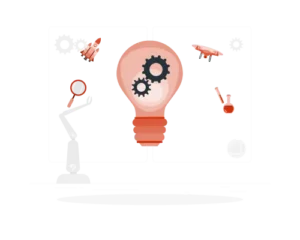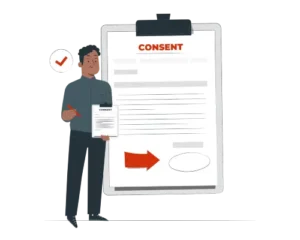Revolutionise your supply chain management and thrive in the post-pandemic world with the game-changing power of Supply Chain Automation with RPA.
One of the industries that was hit hardest by the COVID-19 pandemic was undoubtedly the Supply Chain industry. The pandemic caused severe disruptions to global supply chains, leaving companies scrambling to adjust to a rapidly changing business environment. However, as the world begins to emerge from the pandemic, the Supply Chain industry is gradually recovering and adapting to the “new normal.” One technology that is helping Supply Chain companies cope with the aftershocks of COVID-19 is Robotic Process Automation (RPA).
This article shares how you can leverage RPA to automate processes in your Supply Chain and take a quantum leap into the post-pandemic era.
Supply Chain Automation versus Traditional Supply Chain Management
Supply chain automation varies significantly from traditional supply chain management systems. Some tools used in conventional workflow systems are ERP and CRM. On the ground of automation approaches, traditional workflow executes tasks with fixed sequences and limited conditions. It uses APIs for backend integration. Using UI, RPA works with a rule-based engine to perform various actions, including recording and replaying user-performed activities.
Knowledge management in the traditional workflow is manual, whereas RPA in Supply Chain Management can automatically capture data patterns for unique situations and use them for future analysis and improvement. Traditional workflow does not have self-learning capabilities. It depends on humans and their willingness to learn. However, RPA combined with machine learning and artificial intelligence will help to improve its accuracy and understanding of varying scenarios. Traditional workflow cannot handle unstructured data, whereas RPA uses features like OCR (Optical Character Recognition) to capture those data.
Benefits of Supply Chain Automation
The benefits of automating the supply chain are many. Supply chain automation helps automate processes like order processing and payments, partner onboarding, tracking, shipment scheduling, invoicing, procurement of raw materials and inventory handling, planning of supply and demand, and customer services.
Robotic Process Automation (RPA) eliminates manual inputs, whether it is for administrative tasks or purchase orders. It can handle requests for proposals, questions, and quotes and help to increase the return on investment (ROI). It can also help in establishing new engagement levels in the supply chain.
Automating supply chain processes will also give employees ample time to prioritise solving problems that require brainstorming, solving novel problems and more.
Automating B2B processes is also possible without incurring a high cost. RPA integrates with other existing supply chain tools seamlessly. Though researchers recommend updating foundational information systems for efficient RPA integration; however, organisations do not have to replace the current tools and software it uses to conduct their business. Robotic Process Automation can successfully integrate with them and function as expected. Furthermore, RPA can continuously analyse tasks assigned to it to recommend more efficient methods for future improvements.
Below is a list of the top 3 Use Cases of RPA in the Supply Chain.
#Use Case 1: Communicating Shipment Status
Automating the supply chain reduces a significant percentage of manual human efforts; it can open and read emails received from concerned parties and recognise and extract useful information for further processing. It can sign into an SAP/Oracle portal to fill in the extracted data from the email. Further, it can also examine shipment status, reply to the customer, and continue processing the email.
#Use Case 2: Vendors-Suppliers Performance Management
Robotic Process Automation (RPA) can continuously track the performance of the suppliers by cross-checking with their Service Level Agreements (SLAs) or Key Performance Indicators (KPIs). If RPA detects any deviation from the pre-defined SLAs/KPIs, then it can generate an alert. This same method is used for other cases within the organisation, such as damage to products, pilferages, and others.
#Use Case 3: Vendor-Supplier Relationship Management
Robotic Process Automation can prepare a request for proposal (RFP) or request for quote (RFQ). After successfully communicating RFP/RFQ with the vendors, it analyses the documents received from the vendors. Then it evaluates the suitability of the vendors, assesses their credit history, and finally selects a vendor.
How can your business ride this change?
After reading this far, you must have realised where the future of Supply Chain Management is heading. Robotic Process Automation has enormous potential in SCM. We recommend you consider automating the supply chain to increase efficiency and save costs in your business processes. Before implementing RPA in your supply chain management few pre-requisites that you should consider are:
Standardized Process
The processes that you want to automate should not be complicated and ever-changing. It should be stable with limited checks and balances. Implementing RPA for a complex process is not impossible, but it will consume more time and cost for your organisation.
Robust Information Technology Infrastructure
Implementation of RPA depends on IT infrastructure. A volatile IT setup will create common issues and halt activities now and then. One process may rely on another in a typical supply chain network. Therefore, things may start to fall like a domino if there is a gap somewhere in the IT infrastructure.
Change Management
Not everybody within your organisation will agree to the change. People will resist it if the change seems like a threat to their job or position within the organisation. You must ensure that the expectations of all the stakeholders are met and that they get what they expect from RPA. Undoubtedly, RPA may bring some adverse effects where employees may have to upgrade their skills to stay relevant. However, strong leadership can ensure that acceptance is even. You can resort to good old management theories to make the change. John Kotter, a professor at Harvard Business School and a renowned expert on change management, suggested an eight-step change model. You can read his book Leading Change, published in 1995 by Harvard Business Review Press, for detailed information on the eight-step change model.
Are you considering automating your supply chain management?
If you have decided to automate your supply chain management system, you are at the right place. We provide customised RPA services to businesses operating in various sectors. Our team of RPA consultants at RPATech can help you streamline your business processes and beat the competition. If none of your competitors is using RPA, then you can take the benefit of the first-mover advantage in your industry and get ahead of others.
For more information on the implementation of RPA in the Supply Chain, you can write us your queries at hello@rpatech.ai or call us at (+91) 8010-369-369, and our RPA consultants will assist you in your inquiries and provide you with tailor-made solutions. Book your free demo NOW!




